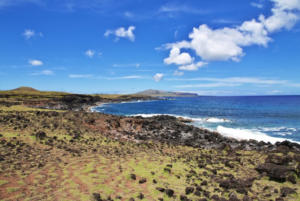The outstanding features of Hawaii’s many climate zones include mild temperatures throughout the year, moderate humidity, persistence of northeasterly trade winds, significant differences in rainfall within short distances, and infrequent severe storms.
As you travel around the Big Island, check out the change of climate zones such as tropical monsoon, tundra, and desert within an hour drive.









